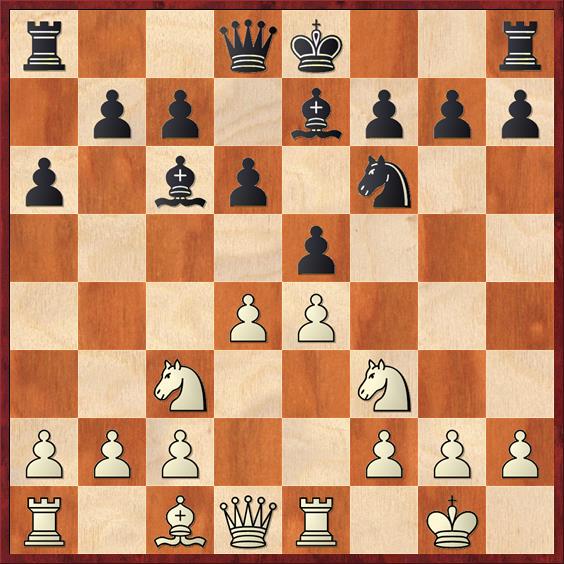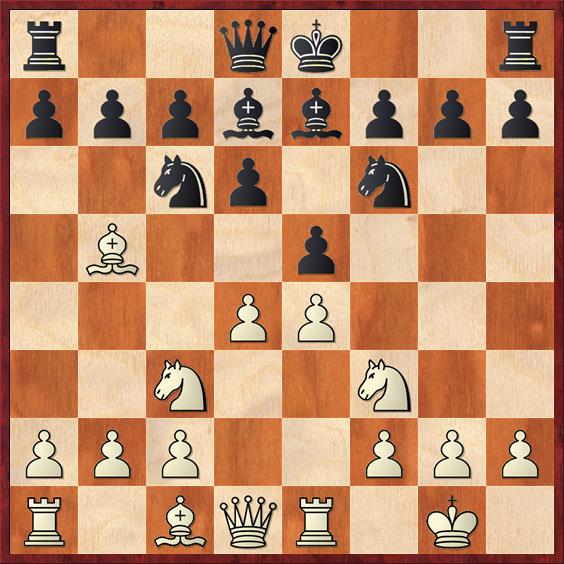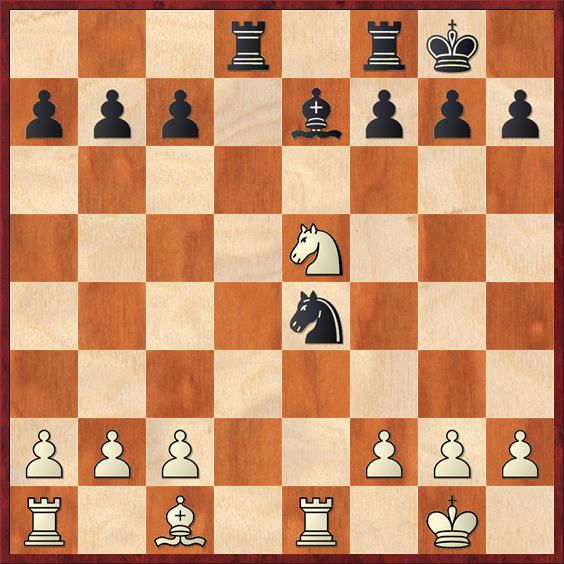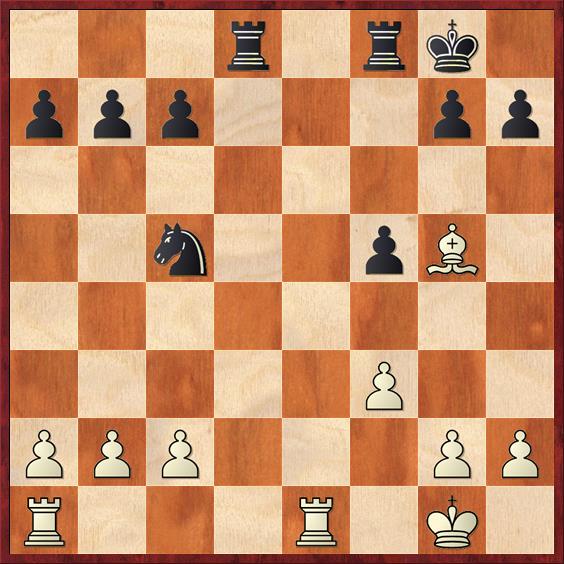I was delighted to read all the anecdotes and stories that my last post (on chess humor) provoked. Coincidentally, last night I saw a post by Sam Shankland on Facebook that struck me as pretty humorous too.
Sam showed the following game from Round 1 of his recent wire-to-wire victory at the Biel International Chess Festival. I should pause for the cause here and note what a really terrific tournament Sam had. He scored 7½ out of 9, for a performance rating of over 2800. He played on board one every round from round 3 on, and against seven consecutive grandmasters he scored four wins and three draws.
But before all that happened, he had to win his round-one game against a mere mortal, Jakob Pfreundt of Germany (rated 2292).
Sam Shankland — Jakob Pfreundt
Ruy Lopez
1. e4 e5 2. Nf3 Nc6 3. Bb5 Nf6 4. d3! …
So this is what it has come to. After beating their heads against the Berlin Wall for the last sixteen years, the top GM’s are now avoiding 4. O-O and playing the mild 4. d3. And why not? The move makes absolutely zero concessions. White does not allow an early queen trade. He does not lock in his light-squared bishop. He does not trade his light-squared bishop.
Nevertheless, for most of the last century this move would have been scoffed at as too unambitious. It’s only after it became clear how solid the Berlin endgame was (and Black can even win it on occasion) that chess opening theory has decided that 4. d3 is okay.
4. … d6 5. O-O Bd7 6. Re1 a6 7. Bxc6 Bxc6 8. Nc3 Be7 9. d4 …
 Position after 9. d4. Black to move.
Position after 9. d4. Black to move.
FEN: r2qk2r/1pp1bppp/p1bp1n2/4p3/3PP3/2N2N2/PPP2PPP/R1BQR1K1 b kq – 0 9
Here’s the funny part. I want you to compare this position to another one that occurred more than a century ago, 1892, in the game Siegbert Tarrasch — Georg Marco. That game went 1. e4 e5 2. Nf3 Nc6 3. Bb5 d6 4. d4 Bd7 5. Nc3 Be6 6. O-O Be7 7. Re1.
 Position after 7. Re1. Black to move.
Position after 7. Re1. Black to move.
FEN: r2qk2r/pppbbppp/2np1n2/1B2p3/3PP3/2N2N2/PPP2PPP/R1BQR1K1 b kq – 0 7
Here the unfortunate Marco played 7. … O-O?, which is already the losing move. To me the following combination is one of the most amazing in chess. It seems as if Black has played seven perfect moves — seven moves that completely conform to opening principles. He has gotten his pieces out, he has maintained his center pawn. Granted, the development of his bishops is a bit passive, but that’s the only thing wrong. Yet Tarrasch won with the following forced sequence, which is eleven moves long (!). It was of course home analysis, and it became known as the “Tarrasch trap.”
Note 1: By the way, when I say “forced,” it’s forced if Black tries to maintain material equality. At any point he could concede the loss of a pawn, or later an exchange, but that would of course be giving White a huge and probably winning advantage.
Note 2: Because of this trap, theory says Black has to play 7. … ed. But this is already a concession, because it gives White a superior center — it is not a “perfect move.” For this reason the Steinitz Defense (3. … d6) fell out of favor and was replaced by the more challenging 3. … a6. Then, a hundred years later, Vladimir Kramnik started playing 3. … Nf6 and theory changed again.
8. Bxc6! …
It doesn’t happen too often that White gives up the bishop for the knight, unprovoked, if it doesn’t even double Black’s c-pawns. But there is a reason.
8. … Bxc6 9. de de 10. Qxd8 Raxd8
Here is the one point where Black has another option. The less obvious 10. … Rfxd8 would avoid some of the tactics that come later, but it still loses.
11. Nxe5 …
White wins the e-pawn but it looks as if he has forgotten about his back rank weakness. So Marco can take on e4 and it looks as if he is still completely okay.
11. … Bxe4 12. Nxe4 Nxe4
 Position after 12. … Nxe4. White to move.
Position after 12. … Nxe4. White to move.
FEN: 3r1rk1/ppp1bppp/8/4N3/4n3/8/PPP2PPP/R1B1R1K1 w – – 0 13
Now, of course, White can’t take on e4 because he would get checkmated. For that reason, it looks as if Black is out of the woods and we are going to have the most bare-bones drawn position imaginable. Surely this is what Marco was counting on when he played 7. … O-O.
But White still has one trick up his sleeve. And it’s amazing how he keeps on having one more trick up his sleeve, move after move.
13. Nd3! …
This both defends the back-rank mate and skewers Black’s knight and bishop. But it still looks as if Black can get out of it.
13. … f5 14. f3 Bc5+
And Marco must again be breathing a sigh of relief. This zwischenzug gains a tempo. After 15. Kh1 Nf2+ or 15. Kf1 Bb6! 16. fe fe+! Black is fine. White’s other options, 15. Be3 or Nxc5, look harmless. But wait! There is more.
15. Nxc5! Nxc5 16. Bg5! …
 Position after 16. Bg5. Black to move.
Position after 16. Bg5. Black to move.
FEN: 3r1rk1/ppp3pp/8/2n2pB1/8/5P2/PPP3PP/R3R1K1 b – – 0 16
I think that this is the point when Marco started to realize that the game of chess is a sick joke perpetrated by a cruel and heartless god against the unsuspecting human species. Not only does the bishop attack the d8 rook, but it also threatens Be7, forking Black’s two remaining pieces, the f8 rook and the c5 knight, and oh, by the way, it also controls the d2 square still, just in case Black should have any ideas of invading there.
Nevertheless, Marco soldiered on a couple more moves: 16. … Rd5 17. Be7 Re8 and now the coup de grace: 18. c4! Black’s rook has no place to run to, and so Black must choose between losing the exchange and losing the knight — or resigning, which is what Marco did.
My more experienced readers must be wondering by now, “Why are you writing a post on the Tarrasch trap? Doesn’t everybody over 1600/1800/2000 (pick a number) know that trap already?”
Well, I have two answers. First, I’m sure some readers haven’t seen it, and it is truly a wonderful trap. It’s one of the nicest exercises in pure chess geometry that I’ve ever seen. Also a good lesson on the initiative. White just keeps playing one threat after another, all defensible in the short run, but in the long run he moves his opponent’s pieces to just the right places (or wrong places, for Black).
The second reason is that everything old is new again. Because in Sam Shankland’s game in Biel, his (almost) 2300-rated opponent made exactly the same mistake that Marco did! If you go back to the first position in this post, Pfreundt played 9. … O-O? and after 10. de! we’re right back to the Tarrasch trap! The only difference is that Black’s pawn is on a6 instead of a7, but that changes nothing. The following ten moves were exactly as in Tarrasch-Marco: 10. … de 11. Qxd8 Raxd8 12. Nxe5 Bxe4 13. Nxe4 Nxe4 14. Nd3 f5 15. f3 Bc5+ 16. Nxc5 Nxc5 17. Bg5 Rd5 18. Be7 Re8 19. c4. Now, unlike Marco, Pfreundt kept on playing an exchange down with 19. … Kf7 20. cd Rxe7 21. Rac1 Rxe1+ 22. Rxe1 a5 23. Kf1 f4 24. h4 g6 25. Rc1 resigns. Black can do nothing about the threat to win another pawn with 26. Rc4.
Shankland commented:
“Even in today’s hypermodern age, it is very important for chess players to know their classics and educate themselves with games from previous generations. This can be difficult to remember in the age of 3400 rated engines, but the rewards are very tangible. One of my first ever chess lessons was on the importance of keeping track of captured pieces and holding forced move strings in my head, and it came from [this] famous game… I taught this exact lesson to some students at the Berkeley Chess School just last week.”
Although it’s surprising to see a 2300 player succumbing to the Tarrasch trap, it’s possible that the transposition confused him; White played d3 instead of d4 and so Black wasn’t thinking of this as a normal open Ruy Lopez. If so, it wasn’t the first time that has happened. In 1974, in diagram 1, a grandmaster — Boris Ivkov — made the same mistake (9. … O-O?) against Mikhail Tal, and Tal collected a free point. (Ivkov bailed out after 12. Nxe5 and conceded the loss of a pawn with 12. … Bd7.)
I was surprised to discover this morning that even the classical Tarrasch trap — that is, without the funny transposition that confused Pfreundt and Ivkov — has still continued to claim some victims even at high levels. According to ChessBase, five players above 2300 have gotten to diagram 2 and played 7. … O-O? — O. Dimakiling, L. Thiele, A. Rios, C. Dobre, and T. Jesenski.
In fact, the game Guenter Kuba (2387) – Lars Thiele (2441), Austria 2013, should get a special prize because both 2300-plus players either missed or were unaware of the Tarrasch trap. Kuba correctly played 8. Bxc6 Bxc6, but then he accountably deviated with 9. h3? Given this lucky reprieve, Thiele played 9. … ed and eventually won the game!



{ 6 comments… read them below or add one }
Petrosian once said, “Studying the games of the Vienna tournament in 1898 I realized that many of what the modern masters consider to be a bleeding edge, has already been implemented by the classics”.
In my lectures at Kolty I always try to show classical games at least once every three weeks. I preach the study of the great seven classics, in the following order: Morphy, Capablanca, Steinitz, Tarrasch, Chigorin, Alekhine and Lasker.
As a data point, I’m 2009 and thought that I knew my chess culture pretty well, and if I have encountered this trap before, I’ve totally forgotten about it. So the cutoff point above which everybody knows it is at least 2010…
Ha, that’s really funny how the Tarrasch trap keeps popping up! Several months I guided a student of mine through how it works. Who knows if he’ll ever get to use it, but it’s a wonderful illustration of how forcing moves can lead to unexpected final results.
Yesterday I got together with three other masters: Gjon Feinstein, Cliff Hart, and Eric Montany. Only one of them (Eric) had heard of the Tarrasch trap. So I guess it’s not something that everybody automatically knows. Perhaps more people knew about it in 1916 than in 2016!
Interesting. It was one of the first opening traps I learned as a kid, in the late 1970s. In fact, I still have and remember the book where I learned it: Horowitz’s “New Traps in the Chess Opening”. I looked it, and indeed it’s trap number 111 there. I think I won a blitz game using that trap at the local club once.
I was warned of it as a kid, but rather than learning the trap, memorized some kind of “as soon as White plays X Black has to play Y” rule to avoid falling into it–not much use if I’d been White! But I haven’t played the Spanish/Ruy Lopez since I was about 17 and I certainly couldn’t have demonstrated the trap.
I bet the little kids around here know it, though. They are much better educated than me.